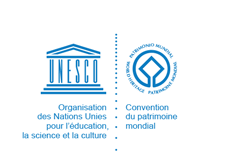The Site of Ancient Town of Takhti-Sangin
Off. of Preservation and Restoration of Monum. of History and Culture, Artistic Ex. Min. of Culture
Avertissement
Le Secrétariat de l’UNESCO et le Centre du patrimoine mondial ne garantissent pas l’exactitude et la fiabilité des avis, opinions, déclarations et autres informations ou documentations fournis au Secrétariat de l’UNESCO et au Centre du patrimoine mondial par les Etats Parties à la Convention concernant la protection du patrimoine mondial, culturel et naturel.
La publication de tels avis, opinions, déclarations, informations ou documentations sur le site internet et/ou dans les documents de travail du Centre du patrimoine mondial n’implique nullement l’expression d’une quelconque opinion de la part du Secrétariat de l’UNESCO ou du Centre du patrimoine mondial concernant le statut juridique de tout pays, territoire, ville ou région, ou de leurs autorités, ou le tracé de leurs frontières.
Les noms des biens figurent dans la langue dans laquelle les Etats parties les ont soumis.
Description
The site of ancient town consists of strongly fortified citadel (165 x 235 m.) and south and north parts stretched at the distance of 500 m. The excavations carried out in the west and central parts of the citadel elicited many interesting facts. There it is found monumental building - "Temple of Oxes" (Greek geographical name of Amu-Daria river). In the temple the square four-columned White Hall (12x12 m.) was excavated completely. Walls are 5 m. high. White Hall was encircled with two rows of corridors from south, west and north. It was oriented by the sides of the world. An entrance was situated from the east side, there was a portico with two rows of columns, four ones in the row, in front of the entrance. From the south and the north the portico was limited with blocks each of them consisted of two neighbouring rooms, one of them had an entrance to ivan (summer-house). There was a temple yard to the east from the portico. In the late period of the existance of the temple the portico was separated with a brick wall with a passage. The walls of the building was made of big bricks (60x80x15 cm.). They were repaired many times and then they gained thickness of three meters. The columns have bases consisting of stepped pedestal and torus, compound trunks, beautiful Ionian capitals. The columns were 6 m. high. Apertures were decorated with stone Thresholds and pilasters. In the one of the angle of White Hall were placed large stone compound altars of local types there. In all probability the temple was decorated with statues on special pedestals. One High bronze statue stood near the outside wall of the portico. The temple was built in the III century B.C. and existed and re-built until the III-IV centuries. Visitors endowed different goods and coins. The sum number of the finds is over 5 thousand. They are works of art, works of metal (gold, silver,bronze, iron), ivory, alabaster, stone, glass, clay. There are many types of weapon: arrow-heads, javelins, swords, daggers, etc. there. The works of art made of ivory are very various. They are domestic and ritual articles- handles of knives, swords, sheaths, etc Ivory works of art were decorated with drowing, relief pictures. Sculptures made of alabaster and clay with bright coloration. Some the finds from Takhti - Sangin relate to V-IV centuries B.C. where the influence of Persepole and Syse is well displayed. Elements of Ellenic art became a part of culture of Bactria. Interrelations of Bactria and Mediterranean Hellenic cities were regularly. Trade in gold and ivory favoured the development of jeweller's and bone carver's art. Thanks to trade interchange of culture, education,, architecture and art styles promoted synthesis of cultural phenomena. In the large territory it was formed unique Bactria - Hellenic culture. For example, there is a small altar with statue made of bronze. There is Greek inscription on the pedestal: "Atrosok devoted to Oxes according to promise". Atrosok was wide-spread Bactria name. The temple of Oxes is devoted to God of Amu-Darya.


 Tadjikistan
Tadjikistan